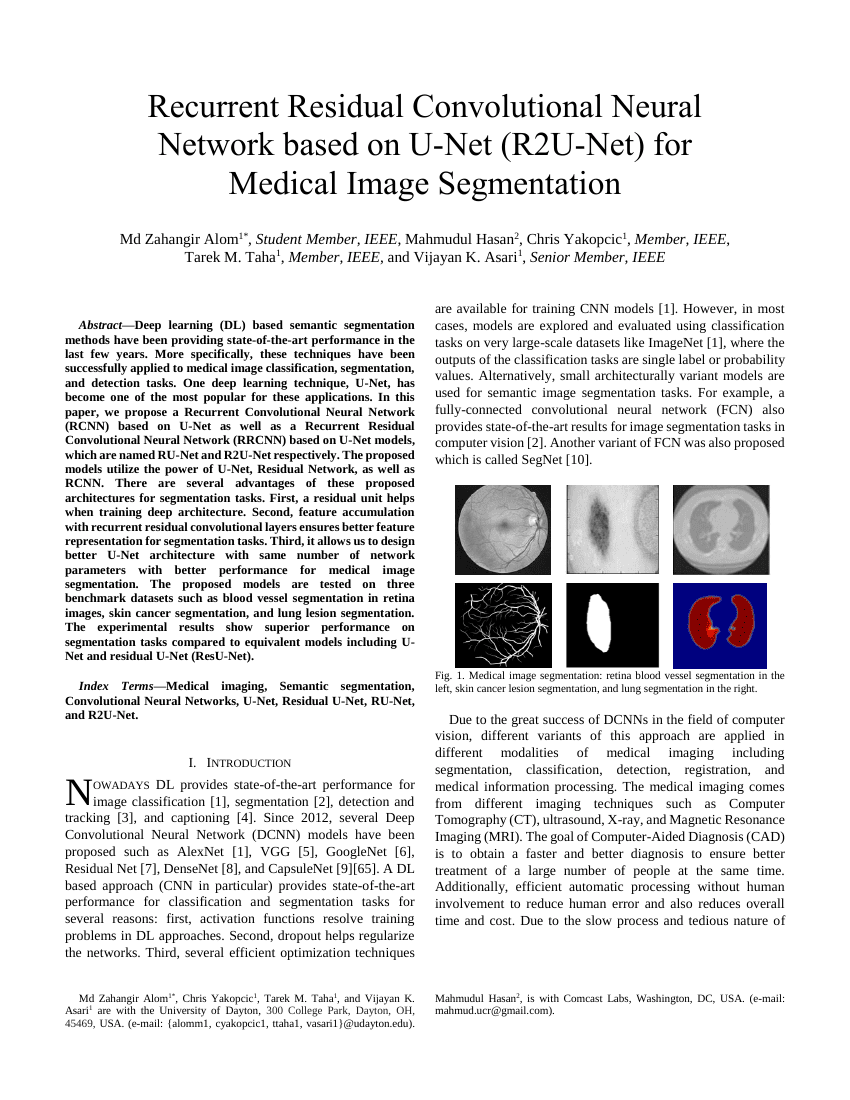
摘要
基于深度学习(DL)的语义分割方法在过去的几年中一直提供着最先进的性能。特别是,这些技术已成功应用于医学图像分类、分割和检测任务。其中,U-Net 深度学习技术已成为这些应用中最受欢迎的方法之一。本文提出了一种基于 U-Net 的循环卷积神经网络(RCNN)模型,以及一种基于 U-Net 的循环残差卷积神经网络(RRCNN)模型,分别命名为 RU-Net 和 R2U-Net。所提出的模型结合了 U-Net、残差网络(Residual Network)和 RCNN 的优势。这些架构在分割任务中具有若干优点。首先,残差单元有助于训练深层架构。其次,通过循环残差卷积层进行特征累积可以确保更好的特征表示,从而提高分割任务的性能。第三,它使我们能够在保持相同数量网络参数的情况下设计出性能更优的 U-Net 架构,以实现更高质量的医学图像分割。所提出的模型在三个基准数据集上进行了测试,包括视网膜图像中的血管分割、皮肤癌分割和肺部病变分割。实验结果表明,与同等模型(如 U-Net 和残差 U-Net (ResU-Net))相比,所提出的模型在分割任务中表现出更优越的性能。
代码仓库
Spider-scnu/Instance-Segmentation-For-Cancer
pytorch
GitHub 中提及
wjcheon/MedicalImageSegmentation_Pytorch
pytorch
GitHub 中提及
DLWK/EANet
pytorch
GitHub 中提及
lbareiro/Image_Segmentation-master
pytorch
GitHub 中提及
LeeJunHyun/Image_Segmentation
pytorch
GitHub 中提及
PlumedSerpent/tmp_perspective_map
pytorch
GitHub 中提及
vankhoa21991/medicalImgSEg
pytorch
GitHub 中提及
yingkaisha/keras-unet-collection
tf
GitHub 中提及
zhaoxing-zstar/R2UNet-paddle
paddle
GitHub 中提及
TheInfamousWayne/UNet
pytorch
GitHub 中提及
BboyHanat/U-Net
pytorch
GitHub 中提及
1044197988/TF.Keras-Commonly-used-models
tf
GitHub 中提及
基准测试
| 基准 | 方法 | 指标 |
|---|---|---|
| retinal-vessel-segmentation-on-chase_db1 | R2U-Net | AUC: 0.9815 F1 score: 0.7928 |
| retinal-vessel-segmentation-on-stare | R2U-Net | AUC: 0.9914 F1 score: 0.8475 |
| skin-cancer-segmentation-on-kaggle-skin | R2U-Net | AUC: 0.9419 F1 score: 0.8920 |